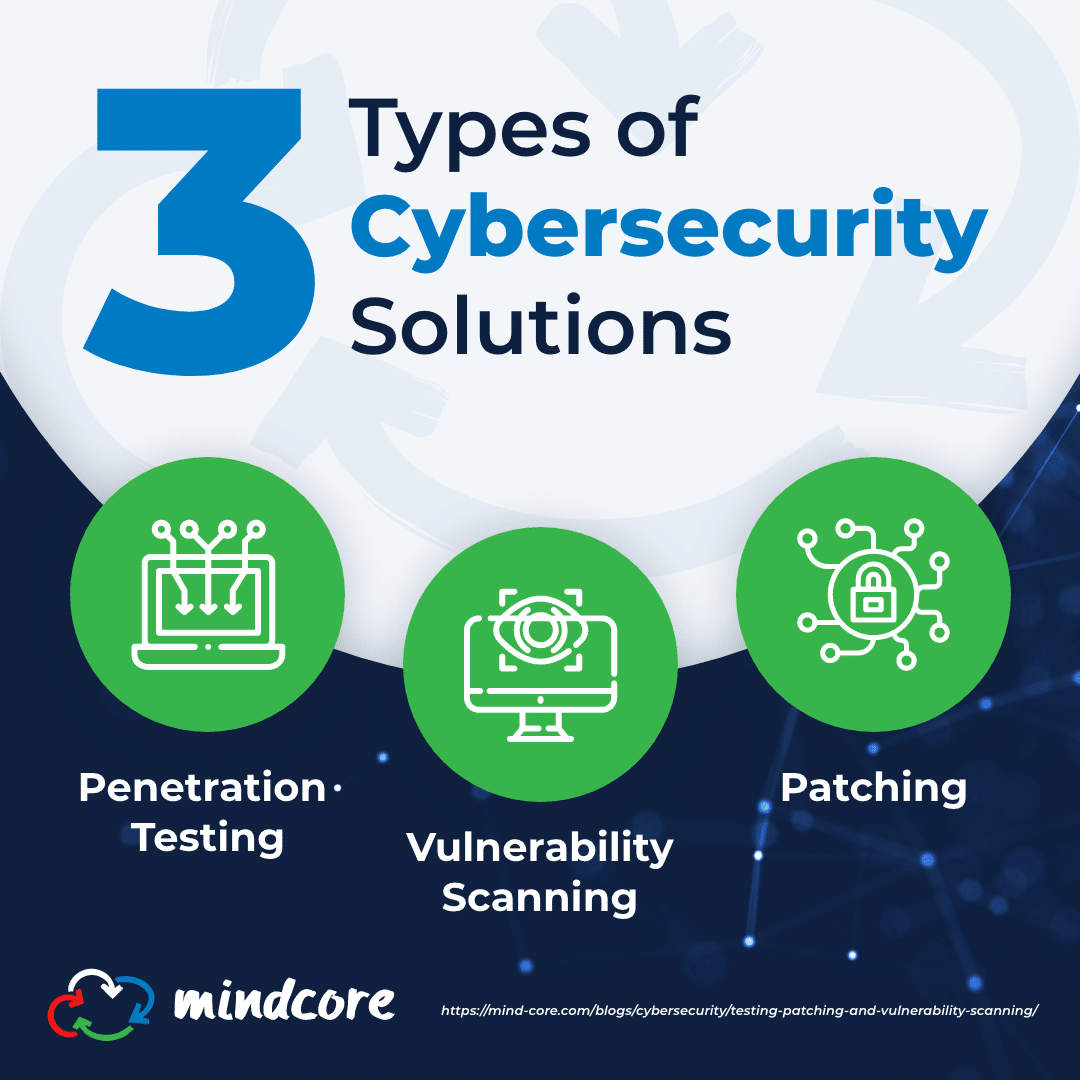No matter how vigilant you are, providing 100% protection to an organization’s IT infrastructure is impossible. Cybercriminals look for the easiest way to achieve their goal, using a variety of tools, techniques, and services that help them find weaknesses across your organization’s systems. That’s why it’s important to understand and implement these three cyber security solutions into your business: patching, vulnerability scanning, and penetration testing.
Patching
Patching is the process of issuing regular security updates to close vulnerabilities before attackers can exploit them. In 2020 alone, 57% of vulnerabilities were classified as being “critical” or “high” severity (vulnerabilities that you absolutely should patch). Next time you receive a software update for your smartphone, tablet, or laptop, do not hesitate to click yes. The majority of these patches include some element of improved security, including bug fixes, new security features, program stability, and a better user experience.
Vulnerability Scanning
Our operating systems and software would be updated immediately if patching were simple. Part of the problem is the sheer number of vulnerabilities identified for patching in any given year. How can we prioritize what should be patched? Internal and external vulnerability scanning.
External Vulnerability Scanning
External scans show weaknesses in your internet-facing network that could lead to a potential incident. By looking at your network from this view, you can easily identify any pressing issues as well as new IP addresses or services that appear and if they present new threats.
Internal Vulnerability Scanning
In contrast to external scans, internal scans can see more of the network, highlighting vulnerabilities in greater depth. Generally, they are used when there is a need to verify that the patching has been completed or to provide a detailed report of known vulnerabilities. Internal vulnerability scanning will give you a clearer picture of the state of your digital security if you have the resources to do so.
Penetration Testing
Penetration tests are designed to exploit weaknesses in your network’s IT system and determine the degree of vulnerability present. The test carefully attacks known weak spots within your software to find the vulnerabilities that are putting your data at risk, creating a detailed report of each weakness present. Penetration testing falls into two main categories: White Box and Black Box testing.
White Box Testing
White box testing is a method of penetration testing that evaluates the internal structures of an application, as opposed to its functionality. It tests for internal security holes, expected outputs and inputs of code processes, and broken or poorly structured coding paths. The tester also has a clear understanding of the internal structure of the software being tested to improve the security of your system.
Black Box Testing
Black box testing is a high-level form of penetration testing where the tester does not have a clear understanding of your internal structure. It involves testing from an external or end-user perspective and focuses on the behavior of the software. Black box testing is used to uncover if the software is usable and easy to understand, compatible with browsers or operating systems, and to expose security vulnerabilities or threats in your system.
Keep Your Systems Secure with Mindcore
Mindcore provides New Jersey and Florida businesses with a wide range of cyber security services, including vulnerability assessments and penetration testing, to keep your computer systems, network, and software programs safe. After looking at your current IT setup, we will create a comprehensive plan to increase security and productivity. Contact us today for more information about how we can help defend your business against potential cyber attacks and threats.

